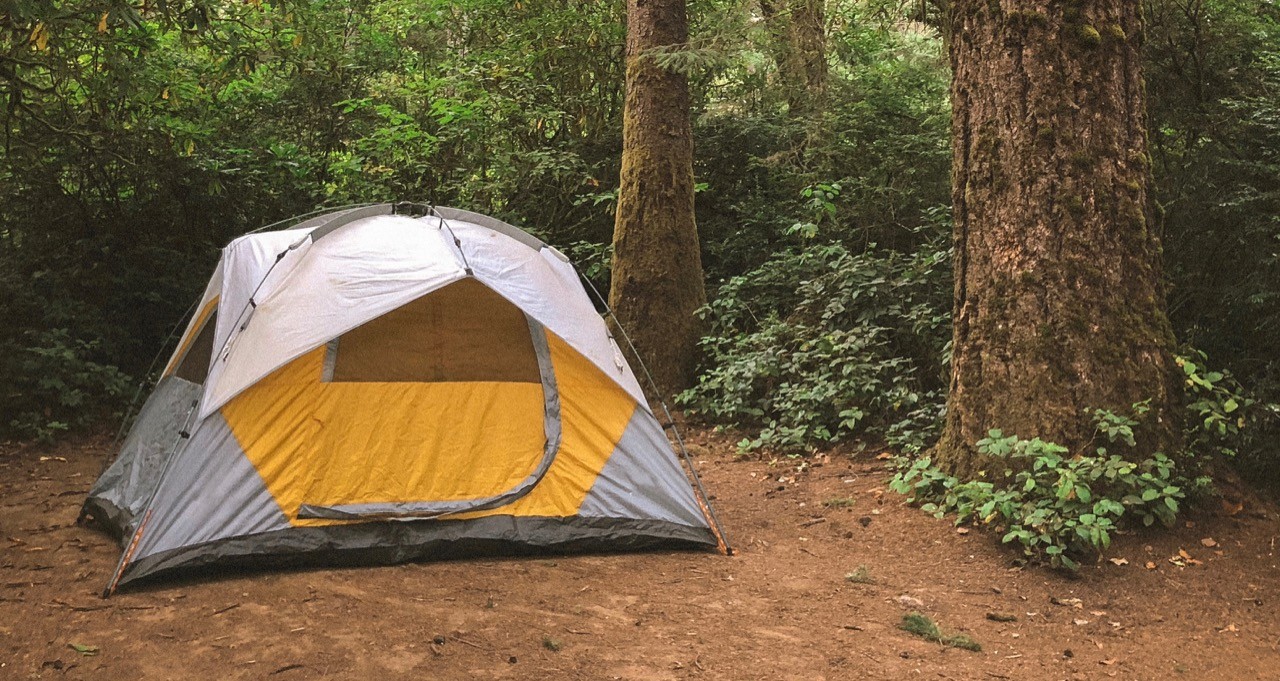

The 7 Leave No Trace Principles Every Camper Should Follow
As campers, it’s our responsibility to leave the outdoor world as clean and undisturbed as it was before we went there. Not only does this allow plants and animals to live their lives in a pristine natural habitat, but it also ensures that future campers will be able to enjoy the same trails we’ve hiked.
Videos by Outdoors
Leave No Trace embodies this sustainable, ethical method of camping. To help us all camp responsibly, the National Park Service has put together a list of the 7 Leave No Trace principles to follow. Here’s a quick overview.
1. Plan Ahead and Prepare
 As the saying goes, an ounce of prevention is worth a pound of cure. By being aware of potential hazards and detours, you can minimize the risk that you’ll end up going off-trail or needing to be rescued. And by repackaging food to eliminate as much packaging material as possible, you’ll reduce the amount of trash that you need to carry out.
As the saying goes, an ounce of prevention is worth a pound of cure. By being aware of potential hazards and detours, you can minimize the risk that you’ll end up going off-trail or needing to be rescued. And by repackaging food to eliminate as much packaging material as possible, you’ll reduce the amount of trash that you need to carry out.
It’s also important to know how busy your chosen trail is and how many people their campsites can accommodate. If you have a large group, it may be necessary to split into smaller groups so as not to overstress local resources.
2. Travel and Camp on Durable Surfaces
 This means hiking on trails, not creating new trails through the woods. It also means that if you are off trail, for example, while hunting, avoid areas where a new trail is starting to form.
This means hiking on trails, not creating new trails through the woods. It also means that if you are off trail, for example, while hunting, avoid areas where a new trail is starting to form.
For campers, this means camping only in designated campsites, where there’s no undergrowth to beat down. If for some reason you’re camping in pristine wilderness, it means doing just the opposite; avoid recently-used campsites in these areas, since repeated use will make it take longer for the natural flora to recover.
No matter where you’re camping, make sure you’re at least 200 feet from rivers, lakes, and streams to avoid contaminating natural water.
3. Dispose of Waste Properly
 If you were in the Boy Scouts or the Girl Scouts, you should already be familiar with the phrase “pack it in, pack it out”. Basically, have a plan to carry out any trash you bring in with you. This includes candy wrappers, food waste, and any other sources of garbage.
If you were in the Boy Scouts or the Girl Scouts, you should already be familiar with the phrase “pack it in, pack it out”. Basically, have a plan to carry out any trash you bring in with you. This includes candy wrappers, food waste, and any other sources of garbage.
This also means staying at least 200 feet from water sources while you’re doing your business. And if you have to go number two, dig a six to eight-inch cathole and cover it back up when you’re finished.
4. Leave What You Find
 This principle applies both to the natural environment as well as to any animals you may encounter. Invasive species have done significant damage to many environments worldwide, so don’t bring non-native animals into an area or remove native animals from their environment.
This principle applies both to the natural environment as well as to any animals you may encounter. Invasive species have done significant damage to many environments worldwide, so don’t bring non-native animals into an area or remove native animals from their environment.
Similarly, a big part of the reason so many people love the wilderness is that they get to see beautiful natural and cultural sites. Removing artifacts from a state or natural park makes it less enriching for everybody. Similarly, building structures like walls or shelters is also a big no-no.
5. Minimize Campfire Impacts
 There are two types of campfire impact. The first is obvious: the impact of the fire itself. Be aware of all fire regulations, and only light a campfire if it’s allowed in your area and if there are no restrictions in place. Even then, be aware that a fire ring does lasting damage to the ground underneath it. Only light a campfire in an established fire ring.
There are two types of campfire impact. The first is obvious: the impact of the fire itself. Be aware of all fire regulations, and only light a campfire if it’s allowed in your area and if there are no restrictions in place. Even then, be aware that a fire ring does lasting damage to the ground underneath it. Only light a campfire in an established fire ring.
Another impact of fire is the removal of wood from the surrounding area. Make sure to only use wood that’s dead and has already fallen to the ground. If it’s still on the tree, leave it be.
6. Respect Wildlife
 Respect for wildlife means not disrupting their natural lives. If you see elk grazing, for example, feel free to watch them and take pictures. But keep your distance and don’t frighten them. Remember, you’re a guest in their home.
Respect for wildlife means not disrupting their natural lives. If you see elk grazing, for example, feel free to watch them and take pictures. But keep your distance and don’t frighten them. Remember, you’re a guest in their home.
Similarly, respect for wildlife also means respecting the fact that many animals can – and will – kill you if they feel threatened. A grizzly bear is a majestic animal, but if you see one it’s important to stay safe and back away slowly.
Finally, remember that your pets can impact the environment just as much as you can. Keep animals close, or leave them at home.
7. Be Considerate of Other Visitors
 The last Leave No Trace principle that every camper should follow is a consideration for other campers. Take your breaks and set up camp well away from the trail, so you don’t obstruct other campers. And avoid shouting and other loud noises. Let other campers enjoy the natural sound of birds, critters, and the wind rustling through the trees.
The last Leave No Trace principle that every camper should follow is a consideration for other campers. Take your breaks and set up camp well away from the trail, so you don’t obstruct other campers. And avoid shouting and other loud noises. Let other campers enjoy the natural sound of birds, critters, and the wind rustling through the trees.
By following these 7 leave no trace principles, you’ll truly Leave No Trace in the wilderness. And you’ll help pass on beautiful, pristine land to future generations.









